- Citas Centro Médico de Caracas: Lunes, Miercoles y Viernes. Pulse el botón Agende una Cita
- Sistema de citas en linea exclusivo para Centro Medico de Caracas en San Bernardino
- Citas CMDLT: Jueves. llamar al 0212-9496243 y 9496245
- Las Emergencias son atendidas en CMDLT previa coordinacion personal al 04142708338
- Proveedor Seguros Mercantil y Sudeban
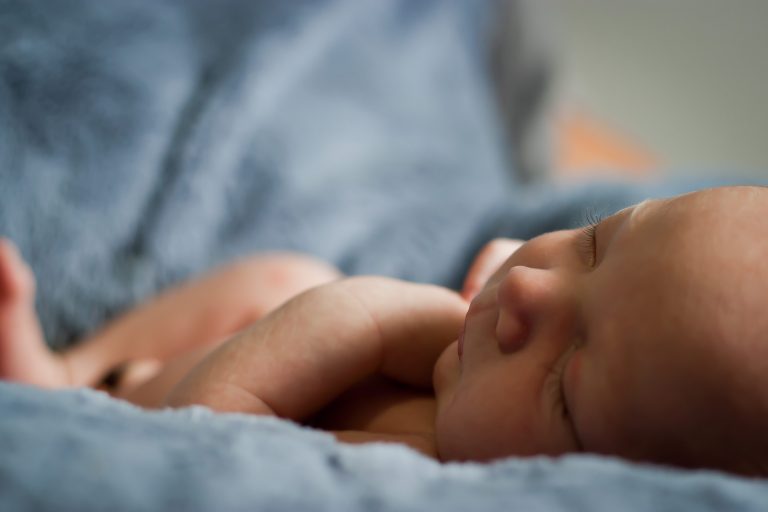
Controversies about the baby’s sleep
Many ask me about the correct position in which a baby should sleep, as it should be the crib and if you can sleep with the parents in their bed to make easier the task of breastfeeding or simply not stop giving love to so expected to be.
It happens that I am an obstetrician and in reality these questions are within the territory of the pediatrician . But I am also a father and I had my share of doubts; and how it is sometimes difficult to obtain the answers I decided to review the best available literature on the subject to help them with the best possible information.
We are all afraid of what they call Sudden Infant Death Syndrome (SIDS) and the last thing you want to suffer is a death of this type due to errors or accidents related to the infrastructure related to the Newborn (RN) sleep.
Anthropologically speaking the human being sleeps lying down, in a group, face up and with a relatively superficial sleep. In prehistoric times you could not sleep on your stomach and only because you were the victim of a predator. Do these data tell you something about how your baby should sleep?
Sudden infant death
Sudden Infant Death Syndrome (SIDS) is defined as the sudden and unexpected death of a child apparently younger than one year of age. The suggested cause is to stop breathing due to lack of maturity of the Central Nervous System. Sudden death is not considered if a congenital lethal anomaly causing the death is discovered, nor obviously, the murder of the baby (which has happened and therefore I mention it). In the autopsy usually no explanatory cause is discovered.
Accidental asphyxia
Accidental suffocation or accidental death in bed during sleep is not considered SIDS, it is an accident caused by malpractice in infant sleep hygiene; It is usually due to accidental crushing by the parents, entrapment between the mattress and the walls of the crib, suffocation by very soft mattresses or water mattresses (less popular every day), plush toys or pillows. You have to be careful if you are very tired and you are breastfeeding: you could fall asleep on the baby.
Sleeping with your baby, co-sleeping, bed sharing, family bed
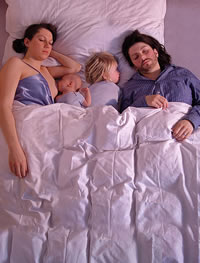
Very dangerous practice
Many babies sleep with their parents for months and even years and it depends a lot on the population, family custom and the available resources. The truth is that many babies sleep with their parents, well, maybe more than what parents report. How many times do parents take their baby to bed at 3-4 a.m. because they are crying or simply want to have them with them? More than 50% of parents surveyed report this practice.
Sleeping with the baby was reported as a safe practice and recommended until recently following suggestions from multiple publications of the mid-90s that suggested benefits in safety, nutrition and psychomotor development; they even suggested decreased deaths from asphyxiation as part of the Sudden Death Syndrome (SIDS), but the most recent position (2016) of the American Academy of Pediatrics recommends (AAP: SIDS_2016) that the Newborn does not sleep in the same parent bed because there is enough evidence and cases reported (3500 cases of neonatal deaths associated with sleep) that show that this practice increases the risk of death by asphyxia of the Newborn. It is noteworthy that the promoters of the shared dream (co-sleep) also suggest the general safety measures of the baby’s sleep without taking into account that this practice violates many of the basic principles of safety: sleeping on your back, firm mattress, without foreign bodies in the vicinity and without blankets.
Under the following conditions, co-sleeping becomes even more dangerous for the newborn:
- Sleep in the same bed if you are a smoker and do not smoke in the room at any time.
- Share the bed with the baby if they have consumed alcoholic beverages, drugs or medication that alters or decreases the level of consciousness.
- Sleeping in the same bed if you suffer from a disease that decreases the level of response, such as diabetes or unstable epilepsy.
- Share the bed if you are very tired or deprived of sleep.
- If you have any acute illness, especially febrile. Obviously not doing so if you have chronic infectious diseases such as Tuberculosis
- Allow pets to share the bed with the baby.
- It is extreme obese
Sleeping in the same room is not a problem but you should not sleep with your baby in the same bed. But we can fix this:
Many parents have their baby’s cribs in their rooms and co-sleeping cradles are becoming popular, they have a design that allows them to be annexed to the maternal bed to have easy access to the baby and avoid the rare but existing risk of accidents due to suffocation. This is a safe practice for the baby and comfortable for parents without interrupting close and frequent contact
Physiology of Newborn sleep
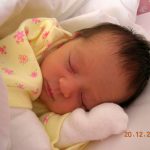
As the NB ages, it sleeps less. On average it sleeps about 16 hours a day, but there may be important differences between babies. When you arrive at 6 months, you will sleep a little more than 14 hours and when you arrive a year, you will sleep for less than 14 hours. Not every day are the same, there will be days where you will sleep more and others where you will sleep less. The initial life of the human being is completely dedicated to the growth and development of the necessary organs to survive, it does not require thinking about developing complex behaviors at the beginning of life because he will have to deal with them; he only eats, sleeps and evacuates, while his Central Nervous System (which is the most important for independent living) acquires new skills daily while the rest of the organs day does more efficiently perform the functions that correspond to them (the very beautiful photo of a baby 6 days old, but note the mistakes: very warm, comforters and side).
Safe crib
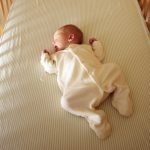
The baby’s crib should be very simple in terms of resources. The mattress should be flat and relatively rigid. The sheet that covers the mattress should be tight and secured under the mattress, without blankets or sheets. The baby should be dressed in suits not with blankets or sheets and should not be placed pillows, toys or stuffed animals.
The mattress must be in intimate relation with the side walls of the crib to not allow spaces so that the head of the baby can not be insinuated through them and suffocate it.
Sleep on your back!
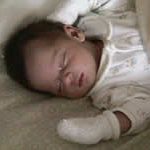
Most people and moms and dads, think that when the baby sleeps on his back, if he vomits, he will drown in his own vomit and die. The truth is that a baby lying on his back (face up, dorsal decubitus) will have his head to one side or the other as the RN can not keep his head straight because he does not have the muscular strength to control it and is proportionally very large. And when you are older (with enough strength to keep it up) is not a comfortable or stable position. So, the baby still lying on his back will have it to one side
Play face down!

The upside down position on the belly (ventral decubitus) must be adopted under surveillance, as a form of play since it stimulates the use of the paracervical and lumbar musculature from birth. This is a form of exercise to help the baby hold his head against gravity and look sideways. Over time, this position is what leads to crawl and check and get information about the environment that surrounds it.
Co-sleeping bed

Co-sleeping was thought to be a safe and desirable practice for many years, but in 2016 the American Academy of Pediatrics, with sufficient evidence, found that it was a dangerous practice during the first 4 months of the baby’s life. Since it is suggested that the baby be with their parents during those months they designed the Co-sleep Cribs, which are the answer to have your baby very close to you but without invading their territory or putting them in danger, they are basically cradles that open towards the mother’s bed and thus facilitate direct contact. This practice is approved by the AAP.